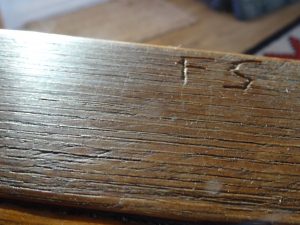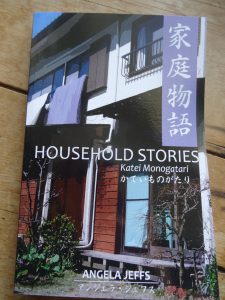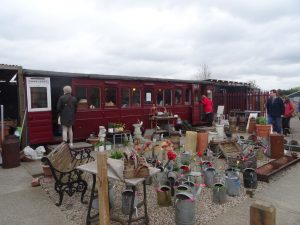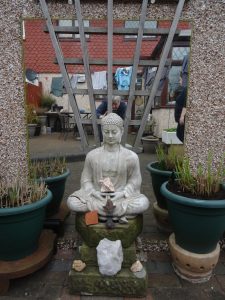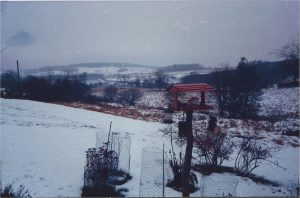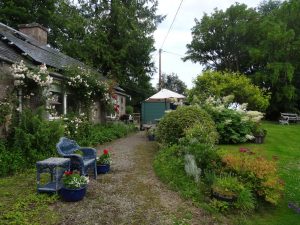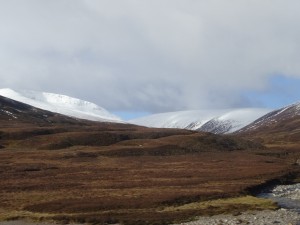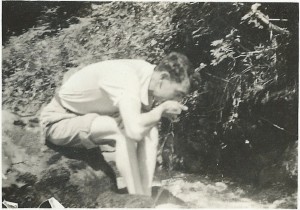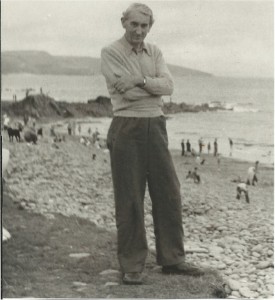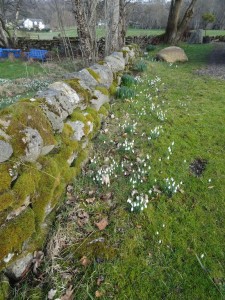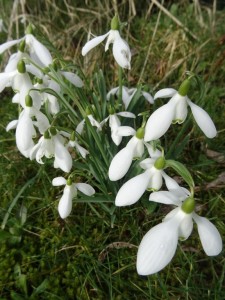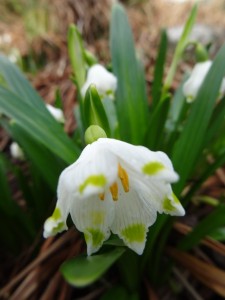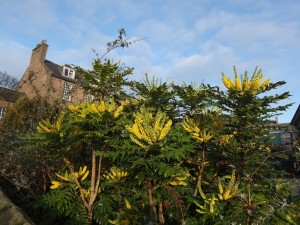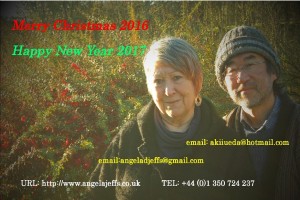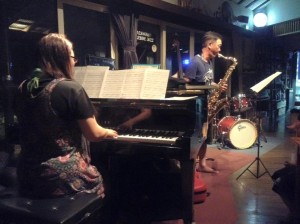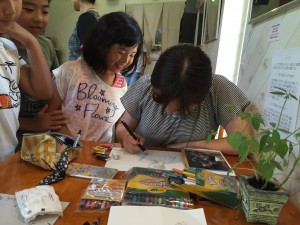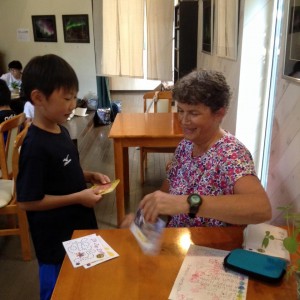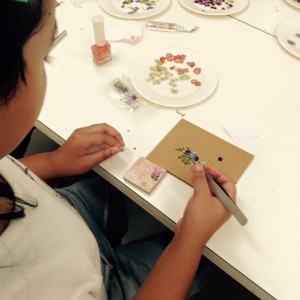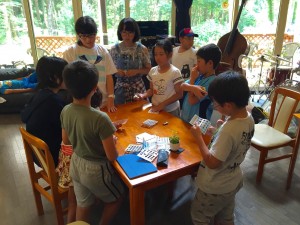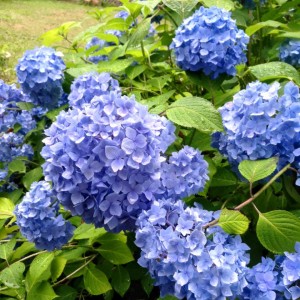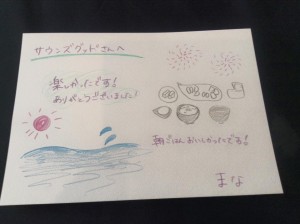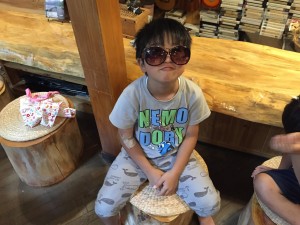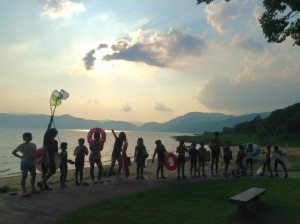Mid-March: Akii grimaced this morning, as he read that it was 4 degrees celsius in Tokyo, and not a petal of pink in sight. Tourists are pouring in from the world over for hanami (cherry blossom viewing time) and shivering from head to foot, poor things. They had packed for Spring, and Japan is not the only place where this lovely season is far behind.

February into March the snow just came coming… Being in a valley we are protected to some degree; not so far away roads were impassable and neighbours and friends snowed in for days. And not only in Scotland!
This time last year our land was awash with golden daffodils. This year the buds are just above ground, and the snowdrops still hard to tell from the white stuff that until just a day or so ago continued to fall from ominous clouds from the east. Weather people say the jet stream is returning to flow from the West, and they ought to know. Note that I use the word ‘ought’ rather than ‘should’; the latter is a word I am attempting to banish from my vocabulary. There are no ‘shoulds’…

Thanks to Barbara Bayer, who posted this beautiful shot of a famed shidare-zakura (weeping cherry) from where she lives north of Tokyo. The sakura map that appears on Japanese TV throughout the cherry season, shows buds opening in Tohoku, northern Honshu. But this fine specimen is at its peak of perfection, with petals just beginning to fall… Japan’s best-loved symbol of impermanence.
Mid-April: Not that much has changed, except that Japan is now awash in pink. Here the snowdrops are fading but still looking fresh in hidden pockets of garden. As for daffoldils, they are about to pop. But when?
Time to move on from weather, because Nature does its thing in its own good time. Let’s look to the positive in this moment.
I’m feeling better. Stronger. More grounded. This after a fall in late February that left me looking like a zombie from The Living Dead.

I am shocked by how much my confidence has been rocked by this most recent fall. Whatever next, I wonder, which makes me tentative as never before.
What happened? I was trying to get back to normal, whatever ‘normal’ is, or was back then, recovering from the knee surgery in mid-December last year. Hard to remember now, and why bother, except to clarify. I know I was reaching to water an indoor plant and lost my balance, twisting as I fell to save the knee, and so crashing into the hearth, fire-irons and wood-burning stove. I found some blood on the corner of the wall the other day, so am guessing I hit that too.
What else? After two spouse visas of two and a half years each, Akii being granted residency in the UK, six weeks after putting in his application to the Home Office. (He was told it might take six months!)
Once again it was stressful beyond belief, for him that is. I had reached a point of accepting that if denied – and he would have just four weeks to leave – we would return to Japan. He would go first and I stay to sort out and pack up, the opposite of how we left Japan. Judging by my reaction when the letter arrived, there had been a part of me hoping that it would be bad news … though not for him, because he loves being here: no stress, he claims. Now we have choices, I wrote on Facebook. But the truth is I’m not good with choices; it’s why I hate shopping. Having the choice to go back to Japan is different from having to. What a surprise to learn after so long that I prefer things to be more cut and dried.
What was the plan if we had no choice but to return to Japan? Maybe to live in Wakayama Prefecture, where there is an Ueda-family house we could potentially move into on Koyasan, a sacred mountain with some 60 Buddhist temples. Akii get a job as a tour guide; his English is certainly good enough after five years in the UK, with life in Scotland enriching his language skills with words like burn, and bonnie, and cringe-worthy colloquialisms like lang may your lum reek, literally meaning ‘long may your chimney smoke, but the best way to wish fellow Scots a long and happy life. I say ‘fellow’, because as Abby (who grew up locally but now lives and works near Aberdeen) commented on Facebook: “This is fantastic news? You must be all so relieved. Akii: our new and permanent resident Scot!”
Me in Japan? Do what I do here, but in a renewed mindset. Beyond that, maybe simply be.
Anyway, here we are, with no plans beyond today:
The burn running with snow melt to sweep away winter detrius, and our septic tank appearing to begin naturally unblocking. (Crossed fingers on this one.)
Healing. My knee, that is, so feeling more grounded, and more mobile.

Rowan (from Edinburgh), Kelly (Essendy), Jane (Spittlefield), Fiona (Glasgow) and Marion (Meigle) met to write their minds alive (Proprioceptive Writing) on February 3.

With March 3 cancelled due to snow, three chose to meet on Easter Saturday, with Anneke travelling from Grantully, Wendy from Balbeggie and Gordon, Crieff. All three found their WRITES covered very similar areas of interest and concern.
My published book and monthly writing meets are moving along nicely. As for my new book, it’s in its own blocked pipeline: first draft done but progress halted by I know not what! But I know that I shall get back to it when the time is right, which will also come in its own good time. In the meantime, I busy about with this and that, trying not to fret.
Basically, I’m ready to go… but not necessarily eastwards, rather onward and upwards. Or even sideways, preferably putting one word in front of another towards completion. Then – this manuscript having been drafted in 2012 – I can really move on.



